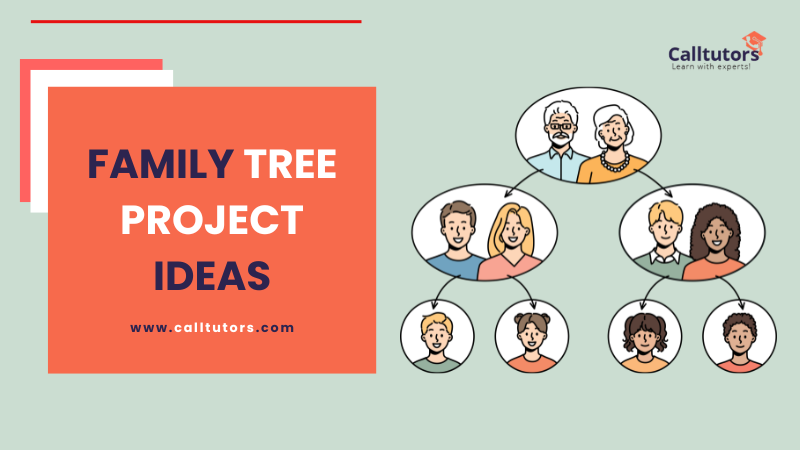Family tree project ideas are more than just assignments; they are a journey into understanding our roots, connecting with our heritage, and appreciating the stories that shaped who we are today.
Whether you’re a student looking to complete a school project or someone simply interested in tracing your lineage, creating a family tree can be a deeply rewarding experience.
Importance of Family Tree Project Ideas
Table of Contents
Family tree projects are important for several reasons. They help students:
- Connect with Their Heritage: Understanding where you come from can provide a sense of identity and belonging.
- Develop Research Skills: Tracing family history requires research and critical thinking, skills valuable in many areas of life.
- Enhance Storytelling Abilities: Sharing family stories helps in developing communication skills and emotional intelligence.
- Foster Family Bonds: Collaborating with family members on these projects can strengthen relationships and open up conversations about family history.
Benefits for Students
For students, the benefits of creating a family tree are manifold:
- Educational Value: It ties into subjects like history, geography, and sociology.
- Critical Thinking: Analyzing records and making connections develops analytical skills.
- Creativity: Designing and presenting the family tree allows for creative expression.
- Personal Growth: Learning about ancestors can inspire personal growth and resilience.
1. Traditional Hand-Drawn Family Tree
Materials Needed
- Large sheet of paper or poster board
- Colored pencils or markers
- Ruler
- Photos (optional)
- Glue (optional)
Step-by-Step Guide
- Gather Information: Start by collecting information from family members. Note down names, birth dates, and any other relevant details.
- Draw the Tree: On your large sheet of paper, draw the trunk and branches. Each branch represents a family line.
- Add Names: Write the names and details on each branch, starting with yourself at the base and moving upwards for ancestors.
- Decorate: Use colored pencils to add leaves, fruits, or other decorations. You can also glue on small photos.
Tips for Accurate Representation
- Verify information with multiple sources.
- Be mindful of different family structures and ensure everyone is represented respectfully.
2. Digital Family Tree
Best Software and Apps
- Ancestry
- MyHeritage
- FamilySearch
- Geni
- RootsMagic
How to Get Started
- Choose a Platform: Select a software or app that suits your needs.
- Input Information: Start entering the data you’ve collected.
- Explore Features: Many platforms offer hints and tips to expand your tree with historical records.
Advantages of a Digital Approach
- Ease of Editing: Changes and updates are simple to make.
- Access to Records: Many platforms offer access to vast databases of historical records.
- Sharing: Easily share your tree with family members around the world.
3. Photo Family Tree
Collecting and Scanning Photos
- Ask Family Members: Request old photos from relatives.
- Scan and Digitize: Use a scanner to create digital copies of physical photos.
Creative Display Ideas
- Photo Collage: Create a collage of photos in the shape of a tree.
- Scrapbook: Design a scrapbook with each page dedicated to a different family branch.
Preserving Family Memories
- High-Quality Prints: Use high-quality paper and ink for printing photos.
- Digital Backup: Keep digital backups of all photos to ensure they’re preserved.
4. Storytelling Family Tree
Combining Stories with Genealogy
- Interview Relatives: Gather stories and anecdotes from family members.
- Write Narratives: Combine these stories with genealogical information to create a rich family history.
Writing Prompts and Ideas
- Significant Events: Focus on key events like marriages, births, and migrations.
- Personal Achievements: Highlight notable achievements and contributions of family members.
How to Present Stories
- Family Book: Compile stories into a family book.
- Multimedia Presentation: Use a tool like PowerPoint to create a multimedia presentation with text, photos, and videos.
5. Crafty Family Tree
Using Craft Materials (e.g., paper, fabric, buttons)
- Paper and Fabric: Use colored paper or fabric scraps to create leaves and branches.
- Buttons and Beads: Incorporate buttons and beads for a unique, tactile element.
Step-by-Step Craft Instructions
- Create a Base: Use a large piece of cardboard or canvas as your base.
- Design the Tree: Draw or paint the trunk and branches.
- Add Details: Glue on leaves, buttons, and other decorative elements.
Display and Preservation Tips
- Frame It: Consider framing your craft project to protect it.
- Keep Away from Sunlight: Display it in a location where it won’t be exposed to direct sunlight to prevent fading.
6. Interactive Family Tree
Using Tools like PowerPoint or Prezi
- PowerPoint: Create a slide for each family member with links to photos and stories.
- Prezi: Use Prezi’s zooming interface to create an interactive, visually engaging family tree.
Adding Multimedia Elements (videos, audio recordings)
- Record Interviews: Include audio or video recordings of family members sharing stories.
- Embed Clips: Add these recordings to your presentation for an interactive experience.
Engaging Presentations
- Interactive Features: Use hyperlinks and interactive elements to make your presentation engaging.
- Live Demos: Consider presenting your family tree live to family members and allowing them to explore it themselves.
7. Online Family Tree Platforms
Overview of Popular Platforms (e.g., Ancestry, MyHeritage)
- Ancestry: Known for its extensive records and DNA testing services.
- MyHeritage: Offers unique features like colorizing old photos.
- FamilySearch: Free platform with a large database of historical records.
- Geni: Focuses on creating a collaborative family tree.
- RootsMagic: Provides comprehensive tools for serious genealogists.
Pros and Cons
- Pros: Easy to use, access to vast records, collaborative features.
- Cons: Some platforms require subscriptions, privacy concerns.
Getting the Most Out of Online Tools
- Regular Updates: Keep your tree updated with new information.
- Collaborate: Invite family members to contribute.
- Use Hints: Take advantage of hints and tips offered by the platform to expand your tree.
8. Family Tree in a Jar
Materials Needed
- Glass jar
- Small paper tags or leaves
- Twine or string
- Photos (optional)
Creative Steps to Build It
- Prepare the Jar: Clean and dry the jar.
- Create Tags: Write names and details on small paper tags or leaves.
- Assemble: Attach the tags to twine and place them in the jar, layering them creatively.
Display Ideas
- Centerpiece: Use as a centerpiece for family gatherings.
- Shelve Display: Place on a shelf with other family memorabilia.
9. Artistic Family Tree
Using Artistic Mediums (painting, drawing)
- Paint: Use acrylic or watercolor paints to create a vibrant tree.
- Draw: Use pencils or markers for a detailed, illustrative approach.
How to Start an Artistic Project
- Sketch Your Design: Plan out your tree on paper before starting.
- Choose Your Medium: Decide whether you’ll paint, draw, or use another artistic technique.
- Create: Start with the trunk and branches, then add names and details.
Tips for Non-Artists
- Templates: Use templates to guide your design.
- Practice: Don’t be afraid to practice on scrap paper first.
- Keep it Simple: Sometimes, less is more. Focus on a clean, simple design.
10. Historical Family Tree
Researching Family History
- Online Records: Use online databases and archives.
- Local Libraries: Visit local libraries or historical societies.
- Family Interviews: Talk to older relatives who can provide firsthand accounts.
Incorporating Historical Context
- Historical Events: Note major historical events that impacted your family.
- Cultural Practices: Include information on cultural or societal practices relevant to your ancestors.
Presenting a Historical Perspective
- Timeline: Create a timeline that includes both family events and historical events.
- Storytelling: Write narratives that weave together your family’s history with larger historical contexts.
Conclusion
Starting a family tree project can be an enriching journey that not only helps you learn about your ancestors but also strengthens family bonds and enhances your research and storytelling skills.
Whether you opt for a traditional hand-drawn tree, a digital version, or a creative craft project, each method offers unique benefits and insights. So gather your materials, reach out to family members, and embark on this meaningful adventure.
Share your project with others, and inspire them to uncover their own family histories. Remember, every family tree is a testament to the stories and experiences that connect us all.



